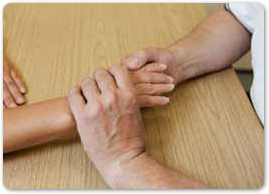
Ganglion cysts are a common and generally harmless condition, although they can be uncomfortable and may affect movement. They start out as bumps on the back of the hand and the sides of the wrist. The cyst itself is filled with fluid, which can thicken over time, making the cyst feel firm or spongy.
The cause of ganglion cysts is not really known, but there are a couple of theories. These include trauma or stress at the wrist joints caused by repeated wear and tear from activities that stress the hand, leading to cyst formation; previous wrist injuries; and structural problems in the joint tissues, which cause fluid to collect between joints and create a bulge.
Although a cyst is not cancerous and may be painless, some individuals find that it is painful with activity. If the cyst presses on a nerve, it might feel tingling or numb.
For some people, the cyst will go away by itself, but they may need to wear a splint during certain activities to reduce pain. Another treatment is needle aspiration to drain the fluid.
We often get asked: can you massage a Ganglion cyst away? Yes, but not always, and it should be done by a medical professional. In fact, therapeutic manual techniques can also help remove fluid from the cyst.
When the cyst is painful or if it interferes with functional movement, surgery is often recommended. After surgery, you will wear a splint on your wrist for a few days.
Physical therapy is important before and after medical treatment of the cyst. Under our direction, you will learn a range of exercises to
- mobilize and strengthen joints
- reduce swelling after surgery
- improve hand strength and flexibility
- prevent stiffness
- maintain coordination
Remember that while ganglion cysts are not dangerous, neglecting their impact on your daily activities can lead to further problems. Regular physical therapy will ensure that you gain maximum function and comfort in your wrist and hand.
